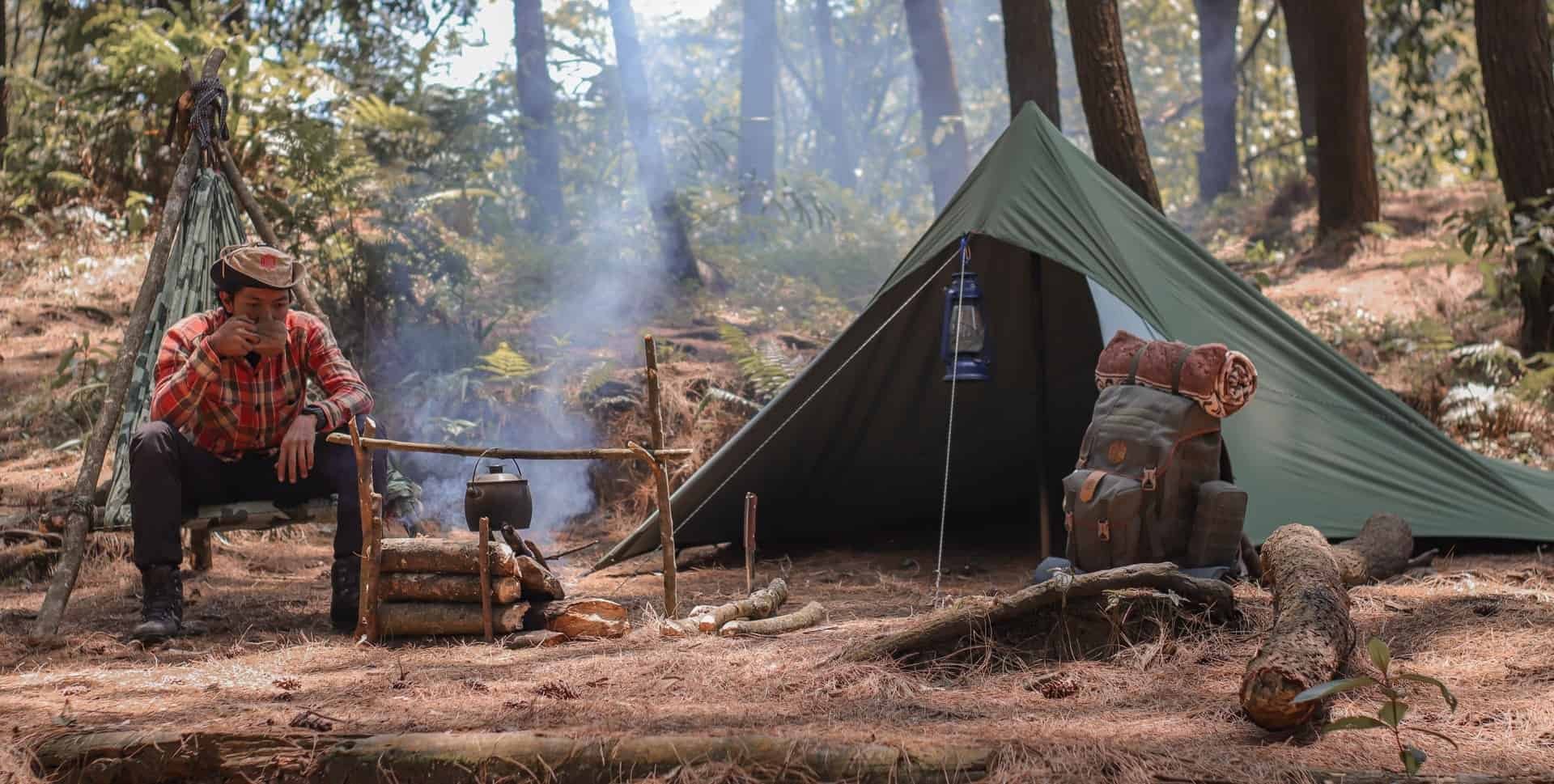Camping in freezing temperatures has often been left to mountaineers and folks living in northern regions, such as Canada, Alaska, and Norway. But more people are venturing into the outdoors in the off-season to escape the crowds. Yet, it’s still icy cold. Thus, some people have turned to hot tents.
Hot tent camping involves a wood-burning stove inside a canvas tent. There is a chimney or an exhaust pipe to avoid asphyxiation and a removable floor, so the tent doesn’t freeze to the ground. This setup allows you to cook indoors safely. However, the tents and equipment are heavy.
People gravitate to hot tent camping over using a floor heater for two main reasons. The first is the unbeatable aesthetic. The other is the ability to cook indoors. It can be dangerous to bring a regular camping stove inside a tent without proper ventilation, but a hot tent has a chimney or exhaust pipe.
So what is hot tent camping? Read on!
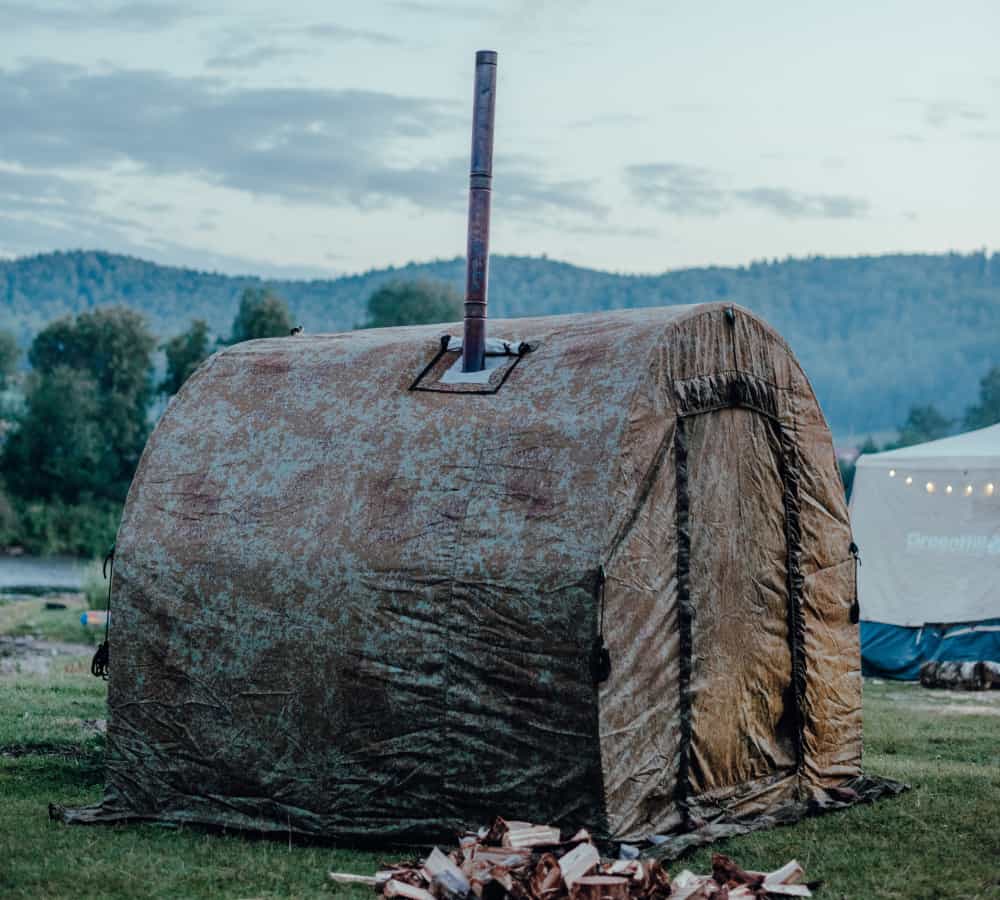
What Is A Hot Tent?
A hot tent is an alternative way to heat a tent in winter that doesn’t involve gas or electricity. Instead, you use a good old fashion fire inside a stove. The stove not only keeps you warm but serves as a tiny kitchen to cook food and boil water for coffee, tea, and cocoa.
It is essential to use a fire-resistant tent for hot camping. The most common material is treated canvas because it doesn’t melt. But there are some synthetic hot tents that can withstand high temperatures. However, converting a regular tent is dangerous as its fabric might not be robust enough to handle the heat.
Proper hot tents have a chimney, stove jack, or ventilation pipe. Ideally, you want one with a removable floor so you can use it during the warmer seasons. (You remove the floor during the cold, so the floor won’t freeze to the ground.)
Hot tents are typically large. There needs to be plenty of extra space between the stove and the tent’s walls. In addition, there needs to be room between the people, their gear, and the stove. Thus, the tent’s bulky design sometimes requires a two-person minimal setup.
Lastly, watch out for condensation. The issue can be particularly problematic with some synthetic models. On the other hand, those with condensation issues often do better in the rain. Many hot tents are built for snow, and their waterproofing isn’t as superior.
How Warm Is A Hot Tent?
Hot tent temperatures depend on the tent, the type of stove, and outside conditions. In below-freezing conditions, many achieve an average of 60-70 degrees inside. However, above freezing, hot tents can get hot, above 80. As a result, many users end up sleeping on top of their sleeping bags.
Can You Sleep In A Hot Tent?
You can sleep in a hot tent provided the fire in the stove is off. While hot tents are fire resistant and have a chimney or stove jack, there remains a risk of monoxide poisoning or fire. These hot tent accidents are rare but have occurred.
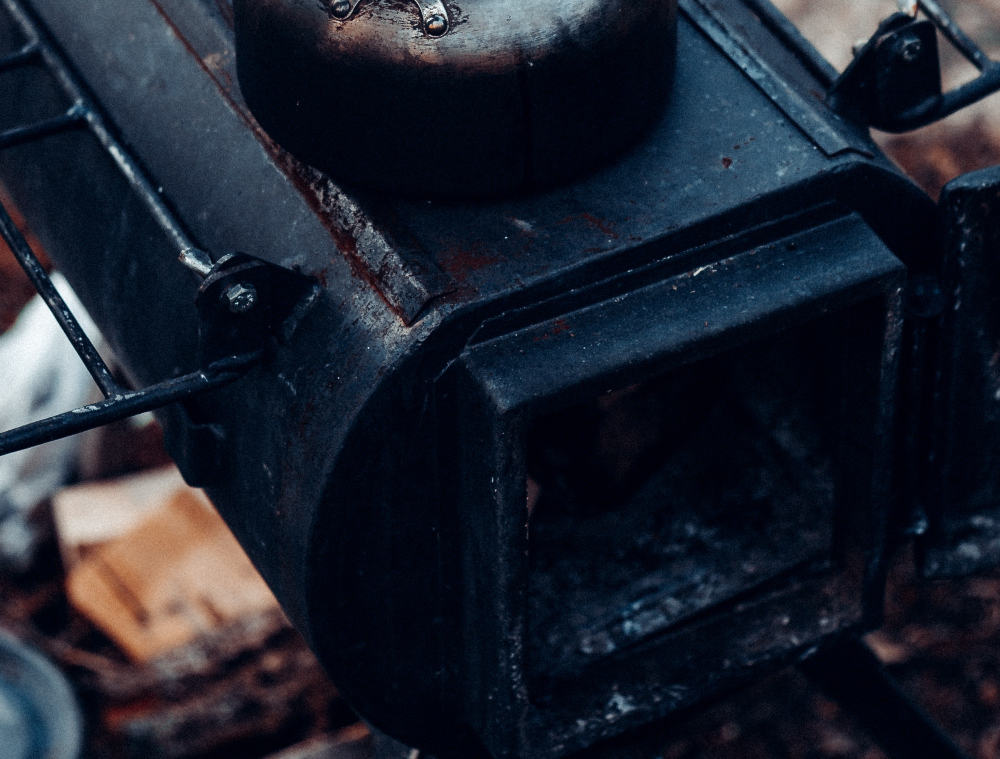
Are Hot Tents Safe?
Hot tents are fairly safe, but as mentioned above, you should not sleep in them while the stove is lit as there is a small risk of fire and monoxide poisoning. Thus, there are a few extra things to consider.
1. Don’t Use A Damaged Hot Tent
Hot tents have a fireproof panel around the chimney or stove jack. However, seams can become worn or burnt. If there is a sign of damage, the hot tent should not be used, as the chimney could tip over.
Rips and tears can also occur during setup and take down. Thus, extra care needs to be taken during these tasks. In addition, you must inspect the tent after setup, even if it was fine when you loaded it. Again, damage can occur as you put it up.
2. Check The Pipe Seals Of The Hot Tent
One of the reasons stoves are slightly less reliable in hot tents than in a house is the frequent installation. In a home, a fireplace is installed once, checked by a professional, and left alone unless it requires repairs or replacement.
In a hot tent, the stove is connected and disconnected every time a new camp is made, increasing the chances of connections not being properly sealed. The seal might not be tight for two reasons:
- It wasn’t connected correctly
- The connection was damaged either through transport, take down, or setup.
3. Monitor Carbon Monoxide And Oxygen Levels In A Hot Tent
You should always use carbon monoxide, and oxygen depletion monitors inside a hot tent. Ideally, you want your monitors to be camping-friendly. Look for waterproof models that can be set lower than 70ppm, preferably 50ppmm. Your basic home model is not suitable for a tiny tent.
A temperature gauge should also be used, as some hot tents can become too hot. You will probably need to increase your water intake to avoid a dehydration headache.
4. Do Not Burn Coal In A Hot Tent
Hot tents use wood as fuel for the stove. Coal or charcoal have different chemicals and can increase the risk of asphyxiating you and any other occupants. Follow the stove’s directions and stick to wood.
5. Do Not Camp In A Hot Tent Without A First Burn
Hot tent stoves need to have the first burn with no occupants in the tent and the door wide open. New stoves have chemical residues from the manufacturing process that burn off during the first fire. As these chemicals are all over the stove, they are being emitted into the tent, not just going up the chimney.
Even better, use the stove outside, without the tent, in a safe place. This will ensure none of those nasty chemicals stick to your tent. You really don’t want that stuff in your lungs.
6. Do Not Hot Camp Around Awake Bears
Do not try to hot camp in bear country if there is a chance any of those bears are still awake. Also, maybe consider not hot camping in bear country at all. Bears like food. Hot camping is one big food smell. It’s not a good combination.
Remember, bears hibernation is not absolute. They can wake up, and some don’t hibernate at all. So know your area before you set up, especially if ice fishing or hunting is involved.
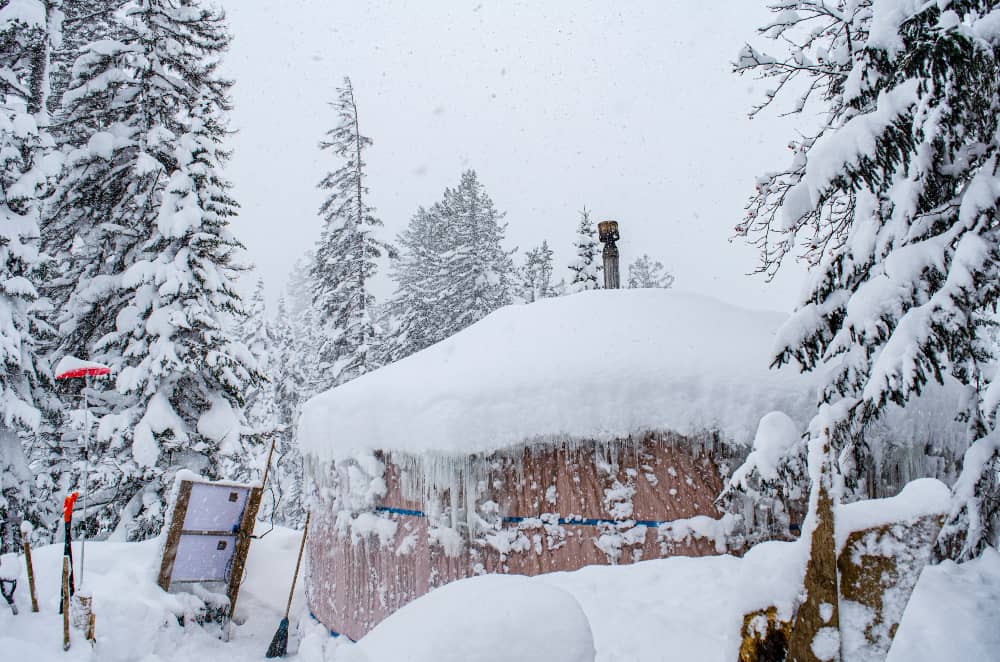
What Are The Pros To Hot Camping?
Hot camping has pros; otherwise, nobody would do it.
1. Hot Camping Is Cozy
Hot camping is cozy. Winter outdoor activities such as snowshoeing, sledding, snowmobiling, ice fishing, cross-country skiing, and hikes are all the more enjoyable when you know you’ve got warmth to look forward to in your tent. It’s like a portable cabin.
2. You Need A Separate Cooking Stove When Hot Camping
Hot camping allows you to heat your tent and see to your cooking needs without separate equipment. You just use the one stove, and you’re good. Hurrah.
3. Hot Camping Doesn’t Need Batteries, Gas, Or Electricity
Camping stoves and heaters need batteries, electrical hookups, or gas. These can be annoying and limit where you go. But hot camping just uses wood. If you live in a place with plenty of trees, this makes it easy.
4. Hot Camping Has Ambiance
Hot camping isn’t just cozy; it looks like it too. The aesthetic has a winter wonderland vibe that wraps charm and relaxation into one.
5. Hot Camping Allows You To Escape The Crowds
Camping is becoming more crowded than some people’s neighborhoods. Certain areas are beginning to feel like giant parking lots during peak season. Embracing hot camping allows you to enjoy the outdoors without the crowds. Pick a good spot, and you’ll even have solitude.
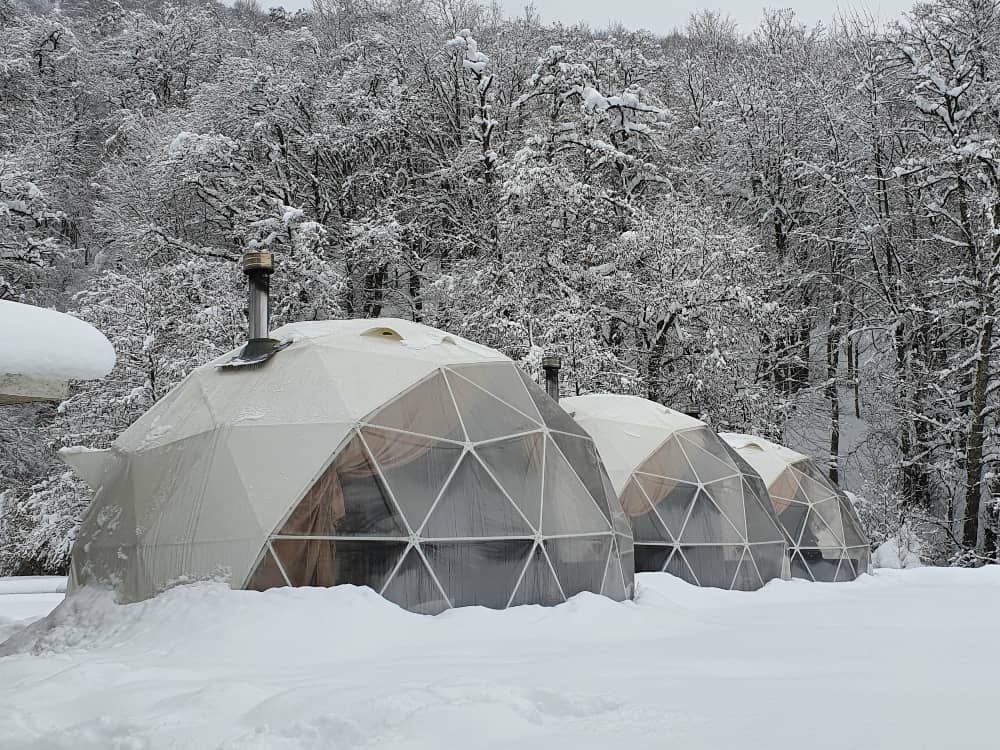
What Are The Cons To Hot Camping?
Camping in a hot tent isn’t perfect (what is?). Thus, there are some cons to the experience.
1. Hot Camping Uses Heavy Equipment
Hot tights are not light are neither is the stove. Even the smaller tents are typically bulkier. Hauling the equipment takes extra room and muscle. Thus, many people will struggle to carry the stuff and set it up without at least a second person.
2. Hot Camping Is Expensive
Hot camping equipment isn’t cheap. Even the tents that look like a bargain have the added cost of having to source your own stove. But the tents that truly stand out are investments.
In addition, it isn’t recommended you try to sleep on the ground. Depending on the tent, you’ll set up hammocks or cots for sleep. This also adds to the price.
Lastly, cooking on a wood stove goes best with cast iron cookware. Many people have invested in lighter camping ware, as it is easier to pack, especially if you do a lot of backpacking. Cast iron lasts ages when properly cared for, but the initial cost can shock some people.
Thus, if you are not sure if hot camping is something you’ll do a lot, look into places that rent them. Then you can try out the experience without plunging so much money into specialist gear.
3. Hot Camping Involves Fire In A Fabric House
Hot camping involves cloth near a fire. You can’t escape the fact that there is an added danger in combining the two. As mentioned above, fires and monoxide poisoning are rare. But there is a risk. Thus, you need to feel confident you can stay awake and remember to put out the fire, no matter how snuggly the tent becomes.
